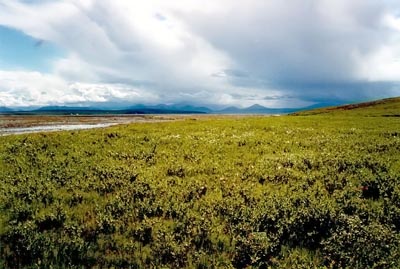
USF&WS
Kenn Kaufman chimes in on ANWR drilling...
"A congressional delegation led by House Minority Leader John Boehner, from my own state of Ohio, is heading to Alaska within the next few days. They will make a brief visit to the North Slope, including the Arctic Refuge. We would like to hope that our elected representatives would approach this visit with open minds and with an honest desire to learn about the refuge. Unfortunately, Rep. Boehner gave a good indication of his motives during a press conference on July 15: 'We're going to look at this barren, Arctic desert where I'm hoping to see some wildlife. But I understand there's none there."
Later on, Kenn delivers the point...
"If oil drilling comes into this magical place, of course it will have an impact. No matter how much the oil companies try to minimize the effects of their operations, large areas will be destroyed or degraded. And the birds that lived on those areas cannot just move to another spot. It simply doesn’t work that way. The land has only a certain carrying capacity, and the good spots are already taken. Destroy a bird’s habitat and the bird is dead, for all practical purposes, just as if you had shot it."
Link: Keep reading Kenn's excellent article.
And from the pro-drilling camp...
"Suggestions that 10-02 is an area rich in wildlife and abundant vegetation are flat-out wrong, observed Herrera. 'Ten-oh-two is located along the coastal plain, north of the Brooks Mountain Range. It is flat and the actual ground is peat tundra,' said Herrera. 'There are no trees and no permanent wildlife. The caribou do not have regular migratory patterns. They have passed through the area four times in the last ten years. It is rather desolate.'"
Link: Republicans Rediscover ANWR
No permanent wildlife...how clever! And the birds? Don't they have annual migratory patterns? How come every pro-drilling piece that comes out about the ANWR conveniently fails to mention the 195 bird species that use or nest on the coastal plain during the summer months each year?

















